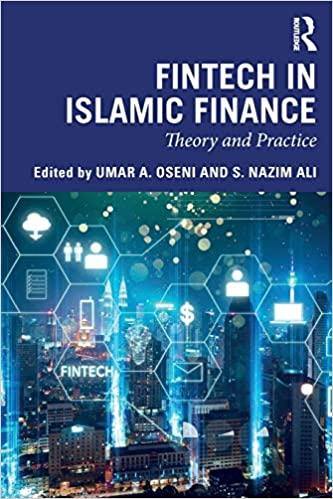Question
WORKSHOP 9 QUESTIONS 1. We tend to place a greater value on avoiding losses (over potential equivalent gains) , due to the associated negative emotional
WORKSHOP 9 QUESTIONS
1. We tend to place a greater value on avoiding losses (over potential equivalent gains), due to the associated negative emotional impact. The priority of avoiding losses also holds true for investors.
a) Give an example, of loss aversion, that illustrates why investors need to avoid the sunk cost fallacy.
b) what is a stop loss?
2. Investors are subject to fear, for example that others know more or have more information. As a consequence, investors feel a strong impulse to do what others are doing.
Which of the following descriptions of investment behaviour are NOT examples or descriptions of cognitive or information processing bias?
3. Entrepreneurs frequently appear to have an overstated sense of their own abilities and may jump into new business ventures with inadequate regard for the competition and the size of the market.
Which of the following factors illustrate how overconfidence' explains why so many business start-ups fail in the first few years?
4. Confirmation bias refers to the tendency to see data the way we want to see it.
Which of the following is NOT true:
c) We tend to accept evidence that goes against what we think is true and reject evidence that supports it.
5. It has long been known that we tend to over-insure small risks and under-protect ourselves against genuine, larger ones.
Which of the following statements also involve other cognitive or reasoning errors?
a) UK adults are twice as likely to insure their pets as they are to insure themselves.
b) humans dont find it easy to think clearly about risk.
c) spread betting is not gambling I know what I am doing
6. Many small-risk insurance offers represent absurdly poor value ... for example much travel insurance, mobile phone contracts or car-hire excess insurance
Which of the following is NOT true:
7. We are constantly being shaped and manipulated in our everyday, online life
Nudge units now abound in the public sphere and online marketing circles are any of the points below NOTnudges?
8. Ambiguity, or uncertainty, aversion, is the tendency to favour the known over the unknown, including known risks over unknown risks.
For example, when choosing between two bets, we are more likely to choose the bet for which we know the odds, even if the odds are poor, than the one for which we dont know the odds.
Which of the following observations describe ambiguity aversion (or solutions to it)?
n.b. there may be more than one correct response
Additional References
Easley, D., & OHara, M. (2009). Ambiguity and nonparticipation: the role of regulation. The Review of Financial Studies, 22(5), 1817-1843.
Ellsberg, D. (1961). Risk, ambiguity, and the savage axioms. The Quarterly Journal of Economics, 75(4), 643-669.
Berger, L., Bleichrodt, H., & Eeckhoudt, L. (2013). Treatment decisions under ambiguity. Journal of Health Economics, 32, 559-569.
Nudge. Richard Thaler and Cass Sunstein (2014)
Step by Step Solution
There are 3 Steps involved in it
Step: 1

Get Instant Access to Expert-Tailored Solutions
See step-by-step solutions with expert insights and AI powered tools for academic success
Step: 2

Step: 3

Ace Your Homework with AI
Get the answers you need in no time with our AI-driven, step-by-step assistance
Get Started


